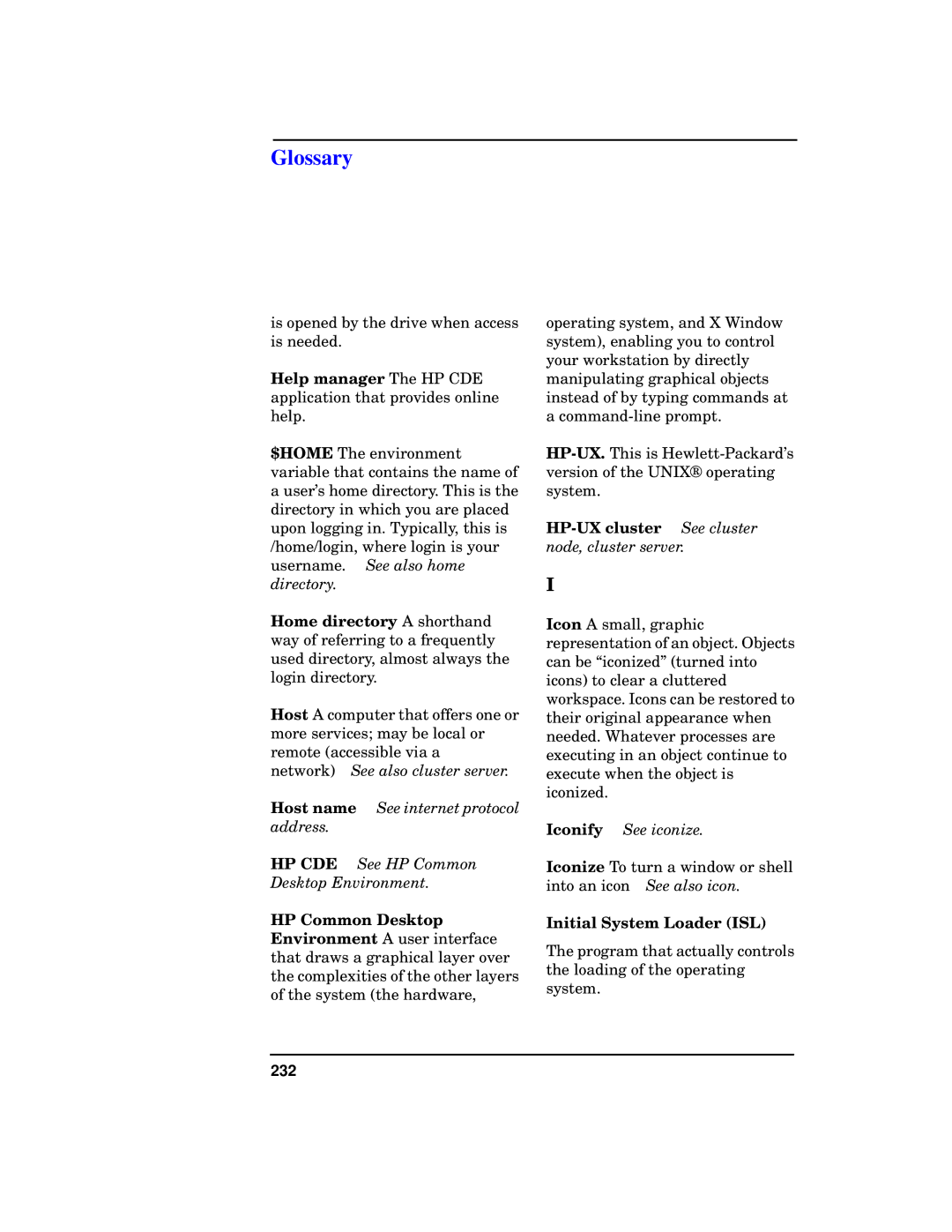
Glossary
is opened by the drive when access is needed.
Help manager The HP CDE application that provides online help.
$HOME The environment variable that contains the name of a user’s home directory. This is the directory in which you are placed upon logging in. Typically, this is /home/login, where login is your username. See also home directory.
Home directory A shorthand way of referring to a frequently used directory, almost always the login directory.
Host A computer that offers one or more services; may be local or remote (accessible via a network) See also cluster server.
Host name See internet protocol address.
HP CDE See HP Common Desktop Environment.
HP Common Desktop Environment A user interface that draws a graphical layer over the complexities of the other layers of the system (the hardware,
operating system, and X Window system), enabling you to control your workstation by directly manipulating graphical objects instead of by typing commands at a
HP-UX cluster See cluster node, cluster server.
I
Icon A small, graphic representation of an object. Objects can be “iconized” (turned into icons) to clear a cluttered workspace. Icons can be restored to their original appearance when needed. Whatever processes are executing in an object continue to execute when the object is iconized.
Iconify See iconize.
Iconize To turn a window or shell into an icon See also icon.
Initial System Loader (ISL)
The program that actually controls the loading of the operating system.
232
